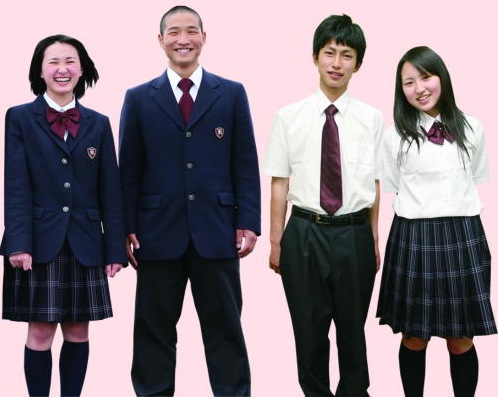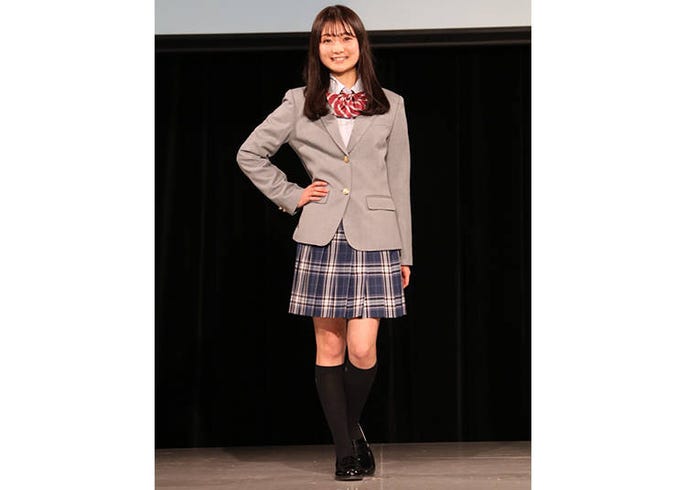8 Easy Facts About Japanese Uniforms Explained
Wiki Article
Some Known Facts About Japanese Uniforms.
Table of ContentsThe 2-Minute Rule for Japanese UniformsHow Japanese Uniforms can Save You Time, Stress, and Money.Japanese Uniforms Fundamentals ExplainedSome Known Factual Statements About Japanese Uniforms The Buzz on Japanese Uniforms
Throughout completion of the Meiji period and also throughout the Taisho duration, western style institution attires were introduced since they were a lot more functional and also practical than the typical garments. It was mainly the male trainees that remained in attire at the beginning. Depending upon the college, females at the time either wore a fit top with skirt, bathrobe or seafarer attire.Seafarer attire was introduced in Taisho 9 (1920's). Japanese uniforms. Find out more regarding the Taisho period at.
Entrepreneurs and women put on dark suits as well as white tee shirts while sales clerks in outlet store use the shop's uniform. Whether they are working in construction, road work, package delivery, or the post office, the majority of workers put on a particular attire. By wearing attires to suit their work, workers feel satisfaction in what they do as well as are full of inspiration and power.
Attires likewise provide the customer a feeling of stability as well as self-confidence in the service or product. Aside from putting on necessary attires, Japanese people likewise such as to put on standard garments which in itself can be identified an uniform. They do this either to fit in or to give themselves the greatest possibility at success.
The Japanese Uniforms Statements
 Without thinking about a choice, young Japanese will certainly head to these stores in order to have the utmost opportunity of being supplied a task. This kind of shop allows company in Japan. In Japan, you will certainly commonly see close friends, fans or family members all clothing alike. There is convenience in "similarity".
Without thinking about a choice, young Japanese will certainly head to these stores in order to have the utmost opportunity of being supplied a task. This kind of shop allows company in Japan. In Japan, you will certainly commonly see close friends, fans or family members all clothing alike. There is convenience in "similarity".A winter months sailor fuku (sailor clothing) with lengthy sleeves on a mannequin. The Japanese college attire is modeled in appearance comparable to that of the European-style naval attires and also was first utilized in Japan in the late 19th century, replacing the traditional kimono. Today, college attires prevail in a lot of the Japanese public as well as private school systems.
The initial model of the existing days Gakuran was initial developed in 1886 for the trainees of Tokyo University.

The seafarer attire today is typically connected exclusively with junior high, because a bulk of secondary schools have changed to even more Western-style plaid skirts or blazers - Japanese uniforms. The clothes is gender-specific as well as both alternatives, male or women, are dispensed to pupils according to the sex they were designated at birth.
Not known Facts About Japanese Uniforms
Japanese school uniform is understood for its fashionable appearance. Many institutions in Japan have their uniforms, and the design varies depending on the institution. Japanese uniforms. For Japanese pupils, college attire is not only for showing which institution a person belongs to. It has turned into one of the style things because of the modification of school uniform styles as well as style fads. Currently, you will certainly see exactly how Japanese college attire has been established as well as transformed over time, as well as exactly how Japanese pupils enjoy their uniforms as style. The very first school attire called sailor fuku was influenced by the European naval attires.
Currently, you will certainly see exactly how Japanese college attire has been established as well as transformed over time, as well as exactly how Japanese pupils enjoy their uniforms as style. The very first school attire called sailor fuku was influenced by the European naval attires.Fashionable college attires lead to the increase the number of candidates to the school. After 1990s, college attires came to be identified not just as "consistent", but as "fashion".
The "fashionalization" of Japanese school uniform caught eyes from all around the read more world, and also there are numerous on the internet shops where you can buy Japanese design college attires. Each institution has its uniform, usually its school sign on.
Things about Japanese Uniforms
The size of sleeves as well as textile are changed according to the season. Sailor attire is a preliminary design of Japanese college uniform for women students, inspired by the naval uniform. It includes a shirt with a sailor-like collar and pleated skirt. Devices such as bow, necktie, or bow are tied about the collar.Few institutions have the bolero attire today. Eton jacket is a coat without a collar, as well as is frequently presented to primary school or junior high institution.
Jumper skirt utilized to be the primary stream of institution attire in the summertime, but it is changed with the other design when the school transforms the uniform. In winter months, jumper skirt is worn under the blazer or the bolero. Suspender skirt institution uniform is typically put on in grade school, often in preschool.
It is used with a shirt in the wintertime. Today college attire is used not only to reveal which school an individual goes to, however to utilize as fashion products as a way of revealing the person's character. Some schools call have a peek at these guys for pupils to acquire just blazers as well as institution pins marked by the institution to ensure that pupils can choose the other products such as socks, footwear, bows, bags, etc.
The Facts About Japanese Uniforms Revealed
Occasionally they don't use their institution uniforms, yet wear uniforms that visit our website they acquired in different shops. It is called "Nanchatte seifuku." Apparel brands such as East child as well as Conomi offer a wide range of optional things for institution attires. The followings are the checklist of things which students can usually select by themselves.Report this wiki page